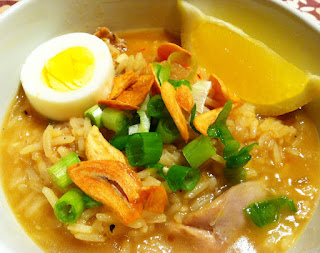Rice
I dream my painting, and then I paint my dream. - Van Gogh
In the late 70's, I took a painting class at Central Arizona, a public community college in Coolidge, Arizona. We were living in our first home in Casa Grande at the time.
When an art contest was announced at the college, my competitive spirit kicked in. An artist-wannabe, I was certain that I got this. I knew exactly what the subject of my painting was going to be.
Rice planters.
So many ideas floated in my head for a hook. In a piece of writing, hook is an opening statement that attempts to get the readers' attention. It grabs their interest, making them want to read more. I adopted this thought-process into my painting.
How about this?
"God looked down on the earth He created and said, I need a caretaker for this world I made. So God made a farmer."
There is no better demonstration of faith than people planting seeds in a field. When one eats, one should not forget those who till the fields. Great, huh?
I'd seen farmers, watched them. I'd walked the paddies and talked to them in the summers that I had spent on the Llenado farm.
That was it.
I'd put them in a rich field where the seeds of life met the hands of the skilled farmer. Some may think that it was the middle of nowhere. I was going to feature it as the center of the world.
Also, Picasso's cubism was topmost on my mind at the time. My plan was to portray my figures in monochrome brownish and neutral colors.
I realized, however, how rice planters must twist and bend to plant rice in the muddy paddies all day, with no chance to sit nor stand. They were to be like the rice stalk. The more grain it bore, the lower it bowed.
Innovatively, I was able to blend that idea with my preferred body shapes that were geometric. Minimalist. Their bodies would be like square-cut diamonds. Gems that did not have upside or downside.
Competition gave me energy. It kept me elevating my thematic focus: my cubistic rice planters would go into the field... to find their soul.
Hah! Enlightenment. Of course. With that underlying motif, the painting should have a characteristic glow, and where else but from a Philippine sun? Intense light on one part of the canvas to highlight nearby details. A few clear clouds above for contrast. Cubistic, of course.
My ideas were coalescing.
As Degas says, art is not what you see, but what you make others see. Thus, ultimately, it would be a painting of hope. Of rice planters who are optimists, thinking that if they tickled the earth with a hoe, earth would laugh with a harvest.
And that was what I painted. This was how it turned out.
By the way, it won first place and was a purchase award (for $100, I think) that was displayed on the admin college wall.
I had actually painted two entries for the competition. While at work on the pieces, I told First Daughter that Dancers in Flight would be hers, and Second Daughter that Rice Planters, was for her. I hadn't foreseen both of them winning and being purchased by the college. (Dancers won third prize). Perhaps, I could visit the college one day and offer to buy the pieces back and give them to The Girls.
In the meantime, I'm consoled by the thought that art is too important not to share. After all, earth without art is just eh.






